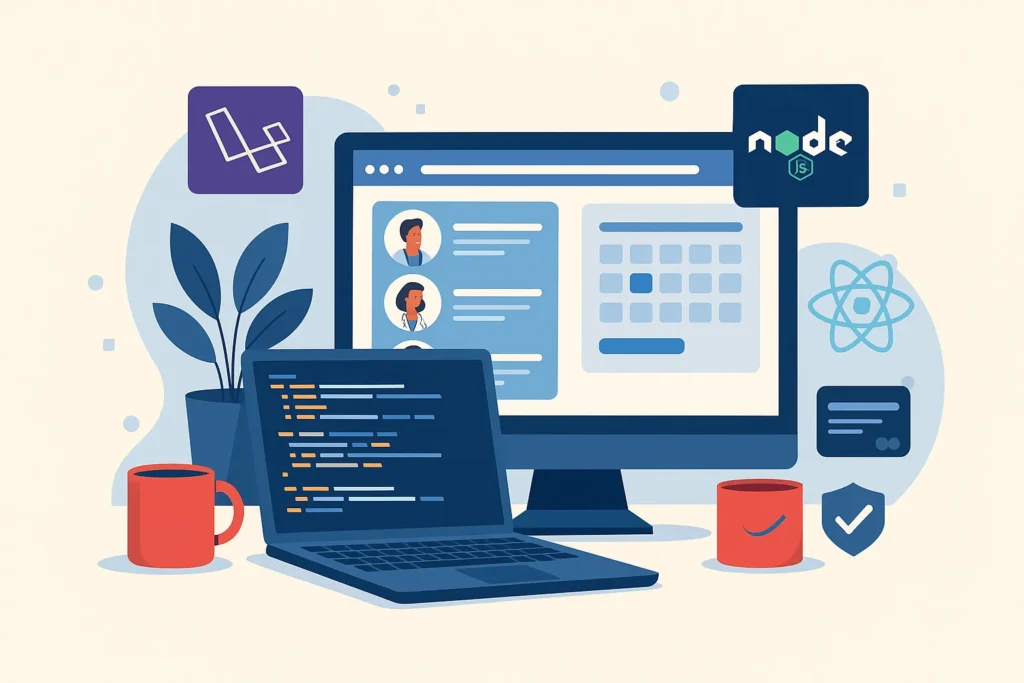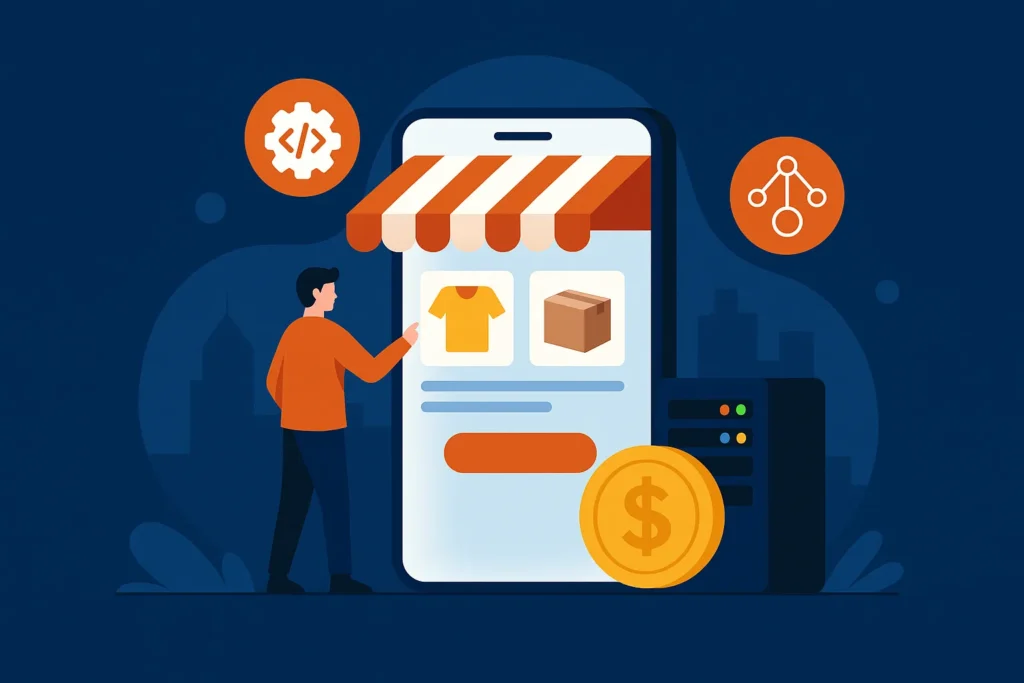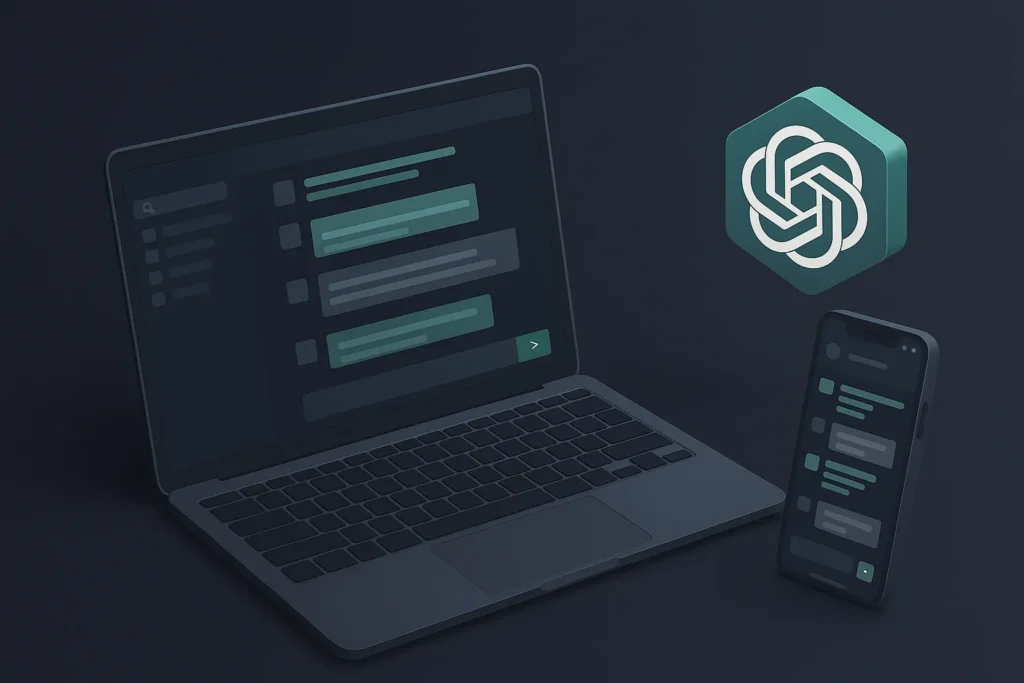In recent years, food delivery apps have transformed how people access their favorite meals, bringing convenience directly to their doorsteps. Among these, Baemin has gained a strong foothold, known for its easy-to-use platform, diverse restaurant offerings, and smooth delivery process. For businesses and entrepreneurs interested in entering the food delivery market, creating an app like Baemin can be a powerful opportunity to tap into a growing industry that shows no signs of slowing down.
Food Delivery App Development involves a blend of smart technology, intuitive design, and an understanding of user expectations. Miracuves Solutions stands out as a trusted partner in this journey, equipped with the expertise needed to create user-friendly, feature-rich, and scalable apps tailored to the unique needs of a food delivery business. This guide will walk you through the core features, development process, costs, and strategies required to build an app like Baemin that can compete in today’s competitive market.
What is Baemin and What Does It Do?
Baemin is a popular food delivery app that originated in South Korea, rapidly gaining traction due to its user-friendly interface and wide selection of restaurants. The app allows users to browse menus, place orders, and track deliveries in real time—all while enjoying a seamless, highly intuitive experience. Baemin differentiates itself by focusing on customer satisfaction, offering a range of convenient features like curated restaurant lists, exclusive discounts, and personalized recommendations based on user preferences.
At its core, Baemin serves as a bridge between hungry customers and local restaurants, delivering a diverse array of food options directly to users’ doorsteps. Beyond just delivery, Baemin has cultivated a sense of community, featuring local eateries, unique promotions, and interactive features that encourage users to explore new food options. For users, the app provides simplicity and convenience; for restaurants, it offers a valuable platform to reach more customers.
Why Build an App Like Baemin?
The food delivery industry is booming, with millions of users ordering meals online every day. For entrepreneurs, building a food delivery app like Baemin presents a chance to enter a high-demand market that shows strong growth potential. The appeal of a food delivery app lies in its convenience—busy lifestyles and the growing trend of on-demand services have made ordering food online a preferred choice for many consumers worldwide.
A Baemin-like app allows businesses to reach a vast user base while providing local restaurants with a powerful platform to showcase their offerings. With more people seeking diverse food options and faster delivery times, a well-designed app with an efficient delivery network can achieve widespread adoption. Moreover, the food delivery model offers excellent profitability with revenue streams from delivery fees, restaurant commissions, and advertising partnerships.
Creating a food delivery app isn’t just about entering a profitable space; it’s about offering a service that aligns with modern lifestyles and consumer needs. Investing in such an app opens doors to tap into a thriving industry, with opportunities to scale and add features that set the app apart.
How to Differentiate Your App from Competitors

In a crowded market of food delivery apps, standing out is essential. To create an app that competes effectively, it’s crucial to identify unique selling points that give users a reason to choose your app over others. Differentiation can be achieved by focusing on user experience, adding personalized features, or targeting specific niches within the food delivery space.
One approach is to offer exclusive partnerships with local restaurants, allowing customers access to unique dishes they won’t find elsewhere. Another option is to incorporate personalized recommendations, suggesting meals based on users’ previous orders or dietary preferences. Gamification elements, such as rewards programs or badges for frequent orders, can also make the app more engaging and encourage regular use. Additionally, focusing on sustainable practices, like eco-friendly packaging or electric delivery vehicles, appeals to environmentally conscious users, which is increasingly valuable in today’s market.
Building an app with a unique identity not only attracts a loyal user base but also adds real value to the food delivery experience. The more you can tailor your app to specific customer needs or preferences, the better positioned it will be to stand out.
Market Size, Growth, and Business Model
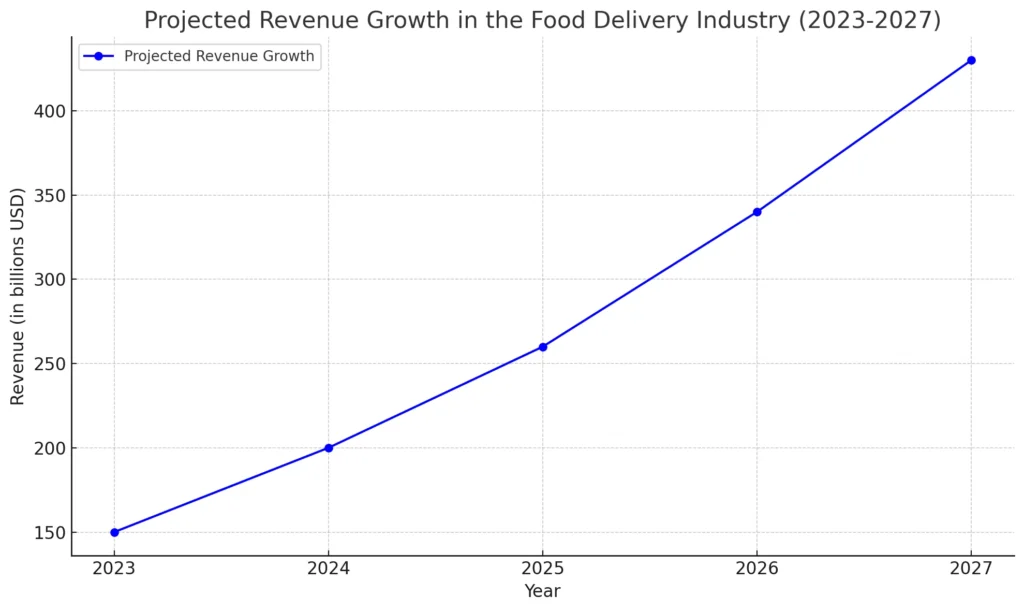
The food delivery industry is one of the fastest-growing sectors globally, fueled by changing consumer habits and the increasing demand for convenience. Market projections indicate continued growth, with billions in revenue expected as more people turn to online platforms to satisfy their food cravings. For businesses looking to enter this space, an app like Baemin taps into an industry that’s not only booming but offers immense scaling potential.
In terms of business models, several profitable options are available. Apps can generate revenue through delivery fees, restaurant commissions, and in-app advertising. Subscription models, where users pay a monthly fee for free or discounted deliveries, have also gained traction as a reliable revenue stream. Each model presents different profit margins, allowing app owners the flexibility to choose what best suits their audience and goals.
Entering the food delivery market now presents a strategic opportunity to capitalize on its upward trend and widespread consumer adoption. With a thoughtful business model, an app can attract a diverse customer base while offering restaurants a valuable platform to reach more customers.
Key Features of a Baemin-Like App
| User Type | Key Features |
|---|---|
| Customers | – Easy Registration & Login – Restaurant Listings & Search – Real-Time Order Tracking – Multiple Payment Options |
| Delivery Personnel | – Route Optimization – Order Management – Earnings Tracker |
| Restaurants | – Order Management – Analytics & Reports – Promotional Features |
To successfully build a food delivery app like Baemin, it’s crucial to incorporate key features that enhance both user experience and operational efficiency. The app should serve three primary user groups: customers, delivery personnel, and restaurant partners. Each of these groups requires specific features that cater to their needs, ensuring smooth transactions and seamless interaction across the platform.
For Customers:
- Easy Registration & Login: Allow users to sign up via email, phone, or social media for a quick onboarding process.
- Restaurant Listings & Search: Users should be able to browse and search for restaurants by location, cuisine, or popularity.
- Real-Time Order Tracking: Providing real-time updates from the moment an order is placed until it’s delivered.
- Multiple Payment Options: Include various payment gateways such as credit/debit cards, digital wallets, and even cash on delivery for user convenience.
For Delivery Personnel:
- Route Optimization: GPS-powered navigation for the most efficient delivery routes.
- Order Management: A dashboard where delivery personnel can view their assigned orders, update statuses, and track payments.
- Earnings Tracker: A clear view of earnings, bonuses, and payment cycles.
For Restaurants:
- Order Management: A system to accept and manage orders, update menu items, and handle availability.
- Analytics & Reports: Access to customer feedback, order histories, and sales reports to improve operations.
- Promotional Features: The ability to offer discounts, highlight special menu items, and run campaigns directly from the platform.
These core features ensure that each user’s needs are met, allowing the app to function seamlessly while offering an engaging, easy-to-use platform for all involved.
Have an idea for a food delivery app?
Let’s Talk About Your Food Delivery App Idea and how we
can make it a reality with seamless features
and secure solutions.
Minimum Viable Product (MVP) Approach
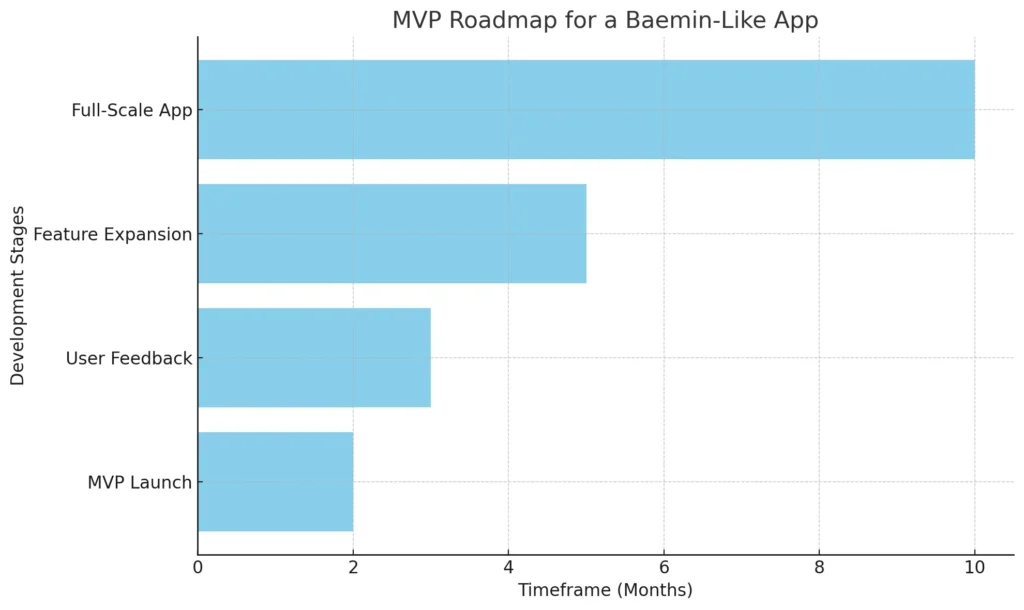
When building a food delivery app like Baemin, starting with a Minimum Viable Product (MVP) is a smart strategy. An MVP allows you to launch the app with essential features, gather user feedback, and then iterate and expand based on real-world data. This method reduces development costs and shortens the time to market, all while ensuring that the app meets the core needs of its users before adding more advanced features.
Essential MVP Features:
- User Registration and Login: Basic authentication through email, phone, or social media.
- Restaurant Listings and Menus: Users should be able to browse available restaurants and view their menus.
- Order Placement and Tracking: Allow users to place an order and track its delivery in real time.
- Payment Gateway: Include at least one payment option, such as credit card or digital wallet integration.
- Basic Admin Dashboard: For restaurants to manage incoming orders and update menus.
By focusing on these core features, the app can go live quickly, start generating users, and gain valuable insights to guide future development. Once the MVP is tested in the market, advanced features such as personalized recommendations, promotional campaigns, and advanced analytics can be added in subsequent updates.
Technical Requirements
| Component | Technology Options |
|---|---|
| Frontend | – React Native – Flutter |
| Backend | – Node.js – Django |
| Database | – MongoDB – MySQL |
| APIs | – Google Maps API (for real-time tracking) – Stripe, PayPal (for payment integration) |
Building a robust and scalable food delivery app like Baemin requires choosing the right technology stack. The technical foundation ensures that the app performs efficiently, offers a smooth user experience, and can handle high traffic without performance issues. There are two main components in the development process: the frontend (what the users interact with) and the backend (what powers the app behind the scenes).
Frontend Technologies:
The frontend is the user-facing part of the app, responsible for design, user interface (UI), and user experience (UX). To ensure a seamless experience across multiple devices, frameworks like React Native or Flutter are popular choices. These technologies allow you to build cross-platform apps (iOS and Android) from a single codebase, reducing development time and costs.
Backend Technologies:
The backend is the backbone of the app, managing data storage, user authentication, and business logic. Common backend frameworks include Node.js and Django, which are known for their scalability and speed. These frameworks can integrate easily with various databases such as MongoDB or MySQL, which are used to store information like user profiles, restaurant data, and order histories.
API Integrations:
Food delivery apps require several third-party integrations to enhance functionality. For example, integrating Google Maps API ensures real-time order tracking and route optimization, while payment gateways like Stripe or PayPal provide secure transaction processing.
Selecting the right tech stack is crucial for building an app that can scale efficiently and offer a high-quality user experience. Each component, from frontend to backend, must be chosen carefully based on the app’s requirements and expected user volume.
Design and User Interface (UI/UX)
The success of a food delivery app like Baemin heavily relies on its design and user interface (UI) to ensure a seamless and engaging experience for users. A well-thought-out design not only makes navigation easy but also enhances the overall user experience (UX), which is key to retaining customers. Since food delivery apps cater to both casual and frequent users, simplicity and functionality should be at the forefront of the design process.
User-Friendly Navigation:
The app’s layout should be intuitive, allowing users to browse restaurants, explore menus, and place orders without confusion. Clear labels, easy-to-reach buttons, and logical categories make the app feel natural and enjoyable to use. The fewer steps users need to take to complete an action, the more likely they are to continue using the app.
Appealing Visuals and Branding:
A visually appealing interface can significantly enhance the user experience. Using clean fonts, attractive images, and consistent branding makes the app feel professional and trustworthy. Color schemes should align with the brand’s identity, but they must also be easy on the eyes to ensure users don’t feel overwhelmed while browsing.
Mobile Responsiveness:
Since most users will interact with the app on their smartphones, it is crucial to ensure that the app’s design is fully responsive. The layout, images, and buttons should automatically adjust to different screen sizes and orientations for a smooth experience across all devices.
UI/UX Design Tools:
Popular tools like Figma and Sketch are widely used to create wireframes and prototypes, allowing designers to test layouts and receive feedback before moving into the development phase. These tools help streamline the process of turning design concepts into reality, ensuring that the final product is polished and user-centric.
A clean, intuitive, and responsive design will keep users coming back to the app, while a poor user experience could lead to frustration and abandonment. Therefore, investing time and resources in the design phase is essential for long-term success.
Development Process
The development process of a food delivery app like Baemin involves multiple stages, from initial planning to the final launch. Each stage is crucial to ensure the app is functional, scalable, and user-friendly. Let’s walk through the key steps involved in developing an app like Baemin.
1. Idea Validation:
Before starting the development, it’s important to validate the idea. This involves conducting market research to identify the target audience, competitors, and potential demand. Validating your concept early will save time and money, ensuring that you build a product that meets real user needs.
2. Wireframing and Prototyping:
Wireframes are basic blueprints of your app that outline the layout and structure. Prototyping takes this a step further, offering an interactive model of the app’s design. This stage helps in visualizing the app’s flow and getting early feedback from potential users. Tools like Figma and Sketch can be used to create prototypes, making it easier to understand the user journey before development starts.
3. Backend and Frontend Development:
In this stage, the app’s functionalities are built. The backend development focuses on building the server, databases, and APIs that will power the app, while the frontend development handles everything the user interacts with, including design and interface. It’s essential to maintain a balance between a visually appealing interface and a powerful backend that can handle the app’s operations smoothly.
4. Testing:
Before launching, thorough testing is required to ensure the app is bug-free and performs well under different conditions. This includes unit testing, where individual components are tested, and user acceptance testing (UAT), where real users test the app to identify any usability issues. Security testing is also essential to ensure user data is protected, especially for payment information.
5. Launch:
Once the app has passed all testing stages, it’s ready for launch. This includes submitting the app to the Apple App Store and Google Play Store, making sure it meets all the guidelines and requirements for approval. After launch, you’ll continue to gather user feedback and roll out updates to fix bugs, add features, or improve performance.
By following a well-structured development process, you can ensure that your food delivery app meets both user and business needs, offering a seamless experience from start to finish.
Read More “Types of Food Delivery App and the Secret to Their Success“
Cost Estimation and Timeframe
| Development Stage | Estimated Cost Range | Timeframe |
|---|---|---|
| App Design | $5,000 – $15,000 | 1 – 2 months |
| App Development | $30,000 – $100,000 | 3 – 5 months |
| Testing and QA | $5,000 – $10,000 | 1 month |
| Post-Launch Maintenance | $10,000 – $20,000 annually | Ongoing after launch |
Building a food delivery app like Baemin involves several cost factors, including development, design, testing, and maintenance. The overall cost can vary significantly depending on the complexity of features, the location of your development team, and whether you’re developing for both iOS and Android platforms. Let’s break down the key cost drivers and estimated timeframes for each stage of the project.
1. App Design:
The design phase includes creating wireframes, prototypes, and the final UI/UX design. This stage is crucial for creating a user-friendly interface that appeals to your audience. Design costs can range from $5,000 to $15,000, depending on the complexity and the experience of the designers involved.
2. Development:
The development phase is the most resource-intensive, as it includes both frontend and backend development, API integrations, and database setup. The cost will depend on the number of features, such as real-time tracking, payment gateways, and user management. On average, app development can cost anywhere from $30,000 to $100,000. For a more feature-rich app, the cost may go higher.
3. Testing and QA:
Quality assurance and testing are essential to ensure that the app runs smoothly and is free from bugs or security vulnerabilities. Testing generally accounts for 10% to 20% of the total development cost, with a typical range of $5,000 to $10,000, depending on the extent of the testing required.
4. Post-Launch Maintenance:
After the app is launched, ongoing maintenance is required to fix bugs, introduce new features, and ensure compatibility with new software updates. Annual maintenance costs usually range from 15% to 20% of the initial development cost, which can be between $10,000 and $20,000 depending on the scope.
Timeframe:
The timeframe for developing a food delivery app can range from 4 to 8 months. This includes:
- Design: 1-2 months
- Development: 3-5 months
- Testing and Launch: 1 month
Partnering with a skilled team like Miracuves Solutions ensures transparency in cost estimation and an efficient timeline to deliver your project on time and within budget.
Monetization Strategies
Monetizing a food delivery app like Baemin involves finding the right revenue streams that not only generate profits but also enhance the user experience. With the growing popularity of food delivery apps, there are several effective ways to earn revenue while providing value to both customers and restaurant partners. Let’s explore the most popular monetization strategies.
1. Delivery Fees:
One of the most common ways to generate revenue is through delivery fees. Users are often willing to pay a small fee for the convenience of having their food delivered. Many apps charge a standard delivery fee or vary it based on factors such as distance, order size, or peak hours. Offering premium subscription models where customers can enjoy free deliveries for a monthly fee is also a popular approach.
2. Commissions from Restaurants:
Food delivery platforms typically charge a commission on each order placed through the app. This is a percentage of the total order value and can range from 10% to 30%, depending on the agreement with restaurant partners. By providing a platform that increases visibility and orders for restaurants, this commission model is widely accepted in the industry.
3. Advertising and Sponsored Listings:
Restaurants looking to increase their visibility on the platform can pay for advertising or featured placements. Sponsored listings allow restaurants to appear at the top of search results or within special promotions. This additional revenue stream benefits both the platform and restaurants seeking more exposure.
4. Subscription Plans:
Subscription models offer users exclusive benefits, such as free deliveries, discounted prices, or priority service. These plans are an excellent way to encourage loyalty and create a recurring revenue stream. Popular food delivery apps often offer monthly or yearly subscription plans tailored to frequent users.
5. In-App Promotions and Deals:
Offering special deals, discounts, or bundle offers through the app not only attracts more customers but can also be a way to partner with restaurants for co-branded promotions. These promotions are often highly effective at driving more orders and increasing user engagement, benefiting both the app and its partners.
By implementing a mix of these strategies, your Baemin-like app can generate steady income while providing value to customers and partners. Each of these models can be adapted based on the target market and user preferences to create a sustainable and profitable business.
Launching and Marketing the App
Once your food delivery app is developed and tested, launching it strategically is crucial to capturing attention and building an initial user base. A well-planned launch, supported by effective marketing strategies, will create buzz around your app and attract both customers and restaurants to join the platform.
1. App Store Optimization (ASO):
To increase visibility, your app needs to be optimized for the app stores (Google Play and Apple App Store). This involves selecting relevant keywords, writing a compelling description, and choosing clear, appealing screenshots. App Store Optimization (ASO) makes it easier for users to discover your app when searching for food delivery services.
2. Social Media Marketing:
Social media is a powerful tool to create excitement and engagement. Running targeted ads on platforms like Instagram, Facebook, and Twitter can help you reach potential users based on location, interests, and demographics. Consistently sharing engaging content, such as special promotions, featured restaurants, and customer stories, will keep your followers interested and encourage them to try the app.
3. Influencer Collaborations:
Partnering with local food influencers and bloggers can amplify your app’s reach. Influencers can provide authentic recommendations to their followers, boosting credibility and generating interest. An influencer campaign with promotional codes or discounts often works well to attract new users.
4. Referral Programs:
A referral program can help accelerate user acquisition by rewarding existing users for bringing in friends and family. Offering discounts or credits for each successful referral encourages users to share the app within their network, expanding your user base at a lower cost than traditional advertising.
5. Partnerships with Restaurants:
Collaborating with popular local restaurants can give your app a boost. Exclusive launch deals or partnerships with renowned eateries can create buzz and draw users to the app. Showcasing special menus or promotions from partner restaurants makes the app more appealing to food lovers.
By using a combination of these marketing strategies, you can create a strong presence in the food delivery market, generate downloads, and establish a loyal user base. Each tactic, from ASO to social media marketing, plays a role in driving visibility and engagement for a successful app launch.
Legal and Regulatory Considerations
Launching a food delivery app like Baemin involves navigating legal and regulatory requirements to ensure compliance and build user trust. As your app will handle sensitive information, financial transactions, and deliver perishable goods, it’s essential to follow specific laws and guidelines to safeguard both users and the business.
1. Data Privacy and Security:
User privacy is paramount, especially when dealing with personal details and payment information. Your app must comply with data privacy laws like the General Data Protection Regulation (GDPR) for European users or the California Consumer Privacy Act (CCPA) in the U.S. Implementing strong data encryption, secure payment gateways, and clear privacy policies ensures that user data remains protected and that users feel safe using the app.
2. Food Safety Regulations:
Since your app will facilitate the delivery of food, adhering to food safety regulations is a priority. This includes verifying that restaurant partners comply with food safety standards, such as proper food handling and packaging, to avoid contamination. Depending on your region, there may be specific health department regulations to follow, which can vary by city or country.
3. Payment Compliance:
Integrating secure payment methods is essential to protect user transactions. Complying with PCI-DSS (Payment Card Industry Data Security Standard) requirements ensures that payment processes meet industry standards for security. Working with certified payment providers like Stripe or PayPal helps meet these regulations while also simplifying the integration process.
4. Terms of Service and Liability:
A comprehensive Terms of Service agreement is essential for protecting the app from potential liabilities. This document should cover the app’s rules, user responsibilities, and limitations of liability, clearly stating that the app is a facilitator between restaurants and customers. Having a well-defined Terms of Service agreement ensures transparency and reduces legal risks for the platform.
By addressing these legal considerations, your app will operate within the law, foster trust with users, and reduce potential liabilities. Meeting these requirements builds a foundation for a reputable and reliable food delivery app.
Read More “Create a Food Delivery App Like Swiggy: Key Features, Cost, and Development Process“
Future Growth
The potential for growth in the food delivery industry is vast, especially with increasing demand and technological advancements that continuously reshape user expectations. Once your app is established in the market, the next step is to focus on scaling and expanding its capabilities to cater to a larger audience and enhance the user experience.
1. Expanding User Base and Regions:
To grow your app’s user base, consider expanding into new cities or regions. Begin by identifying areas with high demand and limited competition, then gradually scale operations to cover a broader geographic range. As you expand, ensure that local partnerships with restaurants and delivery personnel are set up to maintain quality service.
2. Adding New Features:
One way to keep users engaged and differentiate from competitors is by adding advanced features over time. Integrate services like loyalty programs, personalized meal recommendations, or customizable delivery options. Another option could be offering scheduled orders or integrating more payment options, which would increase convenience and appeal to a wider audience.
3. Leveraging Data Analytics:
Data analytics can offer powerful insights into user behavior and preferences. By analyzing order patterns, peak usage times, and popular items, you can tailor your app’s offerings to better meet user demands. Data insights also enable targeted promotions, helping you engage users with relevant discounts and exclusive deals.
4. Building Strategic Partnerships:
Partnering with local businesses or popular brands can increase your app’s reach and provide additional value to users. Consider collaborating with health-focused restaurants, grocery stores, or even lifestyle brands for co-branded promotions. These partnerships not only expand your app’s reach but also position it as a versatile platform that serves more than just food delivery.
Expanding your app’s features, user base, and partnerships opens up endless opportunities to stay competitive and relevant in the fast-evolving food delivery market. By planning for growth and continuously innovating, your app can remain a top choice for users and keep up with shifting market trends.
Why Trust Miracuves Solutions for Your Next Project?
| Feature | Miracuves Solutions | Other Providers |
|---|---|---|
| Industry Expertise | Extensive experience in food delivery app development | Limited experience in niche markets |
| Custom Solutions | Tailored to client vision and business needs | Often uses generic, one-size-fits-all templates |
| End-to-End Support | Comprehensive support from idea to post-launch | Limited or project-based support |
| Communication | Transparent with regular updates | Often lacks regular communication |
| Scalability and Flexibility | Designed to evolve and grow with client needs | Limited scalability and adaptability |
Choosing the right development partner is essential for transforming an idea into a fully functional, market-ready app. Miracuves Solutions is a trusted name in the industry, known for its expertise in building custom solutions tailored to meet unique business needs. With a strong commitment to quality and innovation, Miracuves Solutions guides clients through every step of the development process, ensuring that your app is equipped to succeed in the competitive food delivery market.
1. Proven Expertise in Food Delivery Apps:
Miracuves Solutions has extensive experience in building food delivery apps that cater to various business models and user needs. By leveraging industry insights and technical expertise, the team designs apps that are not only visually appealing but also functionally robust. Miracuves Solutions understands the nuances of the food delivery industry and can help you navigate challenges with ease.
2. Custom-Built Solutions to Fit Your Vision:
Every app built by Miracuves Solutions is customized to match the client’s vision and business objectives. Whether you’re looking for an MVP to test the market or a fully-featured app to make an impact, the team adapts its approach to deliver exactly what you need. Miracuves Solutions focuses on crafting solutions that align with your brand identity and user expectations, creating an experience that stands out.
3. End-to-End Support:
From idea validation and design to development, testing, and post-launch maintenance, Miracuves Solutions offers comprehensive support through every phase of the app journey. The team doesn’t just hand over the product—they work with you to ensure the app evolves and scales as needed. This end-to-end support provides peace of mind, knowing that your project is in capable hands.
4. Reliable and Transparent Communication:
Clear and consistent communication is a priority at Miracuves Solutions. With regular updates, detailed timelines, and responsive support, the team keeps clients informed and involved throughout the project. Transparent communication helps ensure that goals are aligned and expectations are met, fostering a smooth and collaborative process.
Choosing Miracuves Solutions for your food delivery app means partnering with a team dedicated to excellence, innovation, and your success. With their expertise and commitment to client satisfaction, you can be confident that your project will be delivered on time, on budget, and to your exact specifications.
Conclusion
Building a food delivery app like Baemin presents a fantastic opportunity to enter a fast-growing market and provide users with a convenient, engaging experience. From understanding essential features and technical requirements to managing costs and implementing effective monetization strategies, each step plays a vital role in creating a successful app. Partnering with a skilled team like Miracuves Solution can make a world of difference, offering expert guidance, end-to-end support, and a clear path to launch.
With the right strategy, technology, and commitment to user experience, your app can not only thrive in the competitive landscape but also scale for future growth. As food delivery continues to evolve, there’s no better time to turn your vision into a reality.
Ready to launch your own food delivery app?
Start Your Food Delivery App Today.
We can help you build a seamless,
user-friendly app that boosts orders
and customer satisfaction.
FAQs
How long does it take to develop an app like Baemin?
The development timeline typically ranges from 4 to 8 months, depending on the app’s complexity and feature set.
What is the estimated cost of building a food delivery app?
Costs can vary widely, from $40,000 for a basic app to $150,000 or more for a feature-rich solution.
Which essential features should a food delivery app include?
Core features include user profiles, order tracking, restaurant listings, multiple payment options, and real-time notifications.
How can I monetize my food delivery app?
Popular monetization methods include delivery fees, restaurant commissions, advertising, and subscription plans.
What technology stack is recommended for a scalable food delivery app?
A recommended stack includes React Native or Flutter for the frontend, Node.js or Django for the backend, and integration with APIs like Google Maps and Stripe for payments.
Check out the top-rated delivery solutions offered by Miracuves – built for performance and scale:
- Postmates Clone like App – Imagine one powerful platform that lets you book a stay, order your favorite meals, hail a ride, pay bills, and much more all in a single app.
- Doordash Clone like App – Book stays, order food, hail rides, make payments, and more all in one seamless app designed to move with you.
- Amazon Fresh like App – From farm-fresh produce to snacks, pantry staples, and household must-haves shop in seconds and get what you need, when you need it.
- FedEx Clone like App – A smart logistics and courier platform for real-time shipment tracking, instant pickups, and secure, on-time delivery.
- Weedmaps like App – A trusted service for the legal delivery of cannabis products, offering fast, reliable delivery and a wide selection of quality strains.





